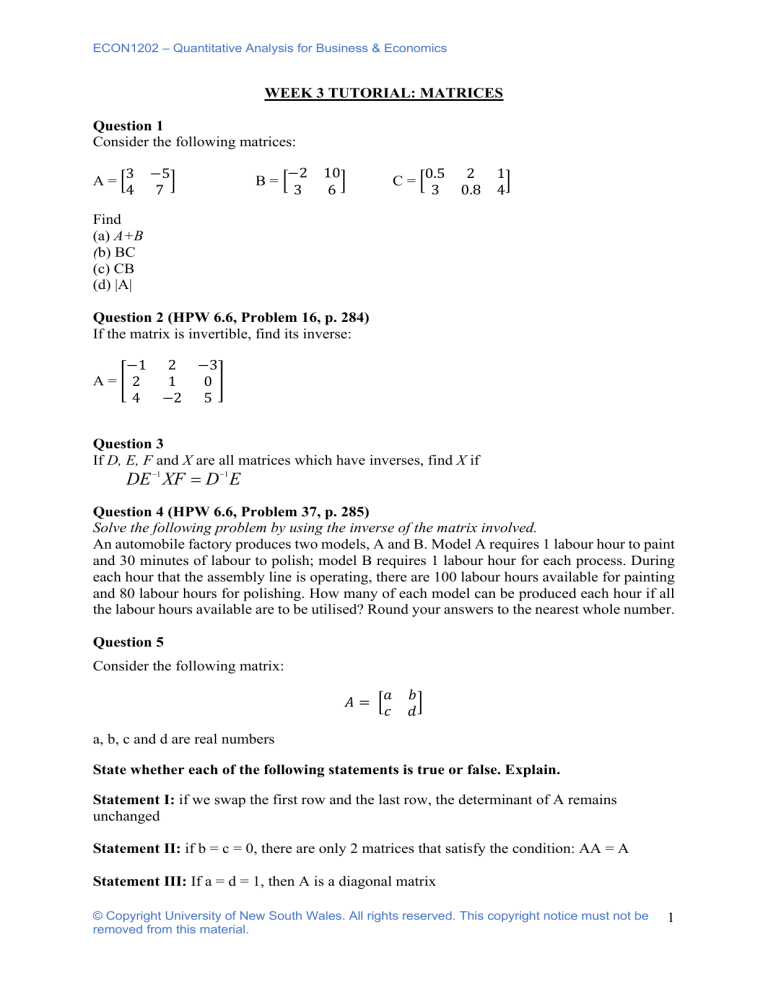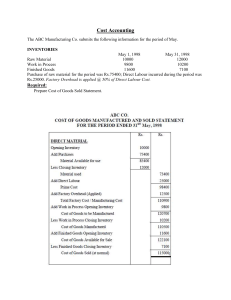Matrices Tutorial: Quantitative Analysis for Business & Economics
advertisement

ECON1202 – Quantitative Analysis for Business & Economics WEEK 3 TUTORIAL: MATRICES Question 1 Consider the following matrices: A=! 3 −5 ' 4 7 −2 10 B=! ' 3 6 C=! 0.5 2 1 ' 3 0.8 4 Find (a) A+B (b) BC (c) CB (d) |A| Question 2 (HPW 6.6, Problem 16, p. 284) If the matrix is invertible, find its inverse: −1 2 −3 A=. 2 1 0/ 4 −2 5 Question 3 If D, E, F and X are all matrices which have inverses, find X if DE -1 XF = D -1 E Question 4 (HPW 6.6, Problem 37, p. 285) Solve the following problem by using the inverse of the matrix involved. An automobile factory produces two models, A and B. Model A requires 1 labour hour to paint and 30 minutes of labour to polish; model B requires 1 labour hour for each process. During each hour that the assembly line is operating, there are 100 labour hours available for painting and 80 labour hours for polishing. How many of each model can be produced each hour if all the labour hours available are to be utilised? Round your answers to the nearest whole number. Question 5 Consider the following matrix: 𝑎 𝐴= ! 𝑐 𝑏 ' 𝑑 a, b, c and d are real numbers State whether each of the following statements is true or false. Explain. Statement I: if we swap the first row and the last row, the determinant of A remains unchanged Statement II: if b = c = 0, there are only 2 matrices that satisfy the condition: AA = A Statement III: If a = d = 1, then A is a diagonal matrix © Copyright University of New South Wales. All rights reserved. This copyright notice must not be removed from this material. 1 ECON1202 – Quantitative Analysis for Business & Economics Brief solutions Q1. 29 4 38 BC = ! ' 19.5 10.8 27 1 5 A+B = ! ' 7 13 CB does not exist. |A| = 41 Q2. Q3. 𝑋 = 𝐸(𝐷!" )# 𝐸𝐹 !" Q4. A = 40, B = 60 © Copyright University of New South Wales. All rights reserved. This copyright notice must not be removed from this material. 2





